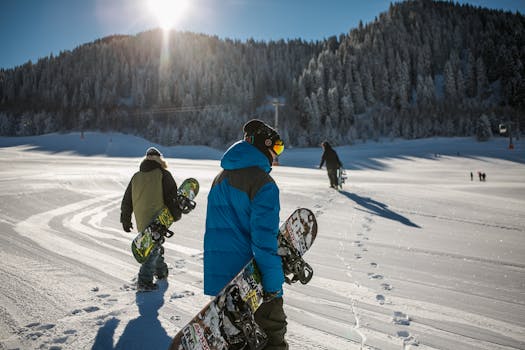The Origins of Snowboarding
Snowboarding, an exhilarating winter sport that combines elements of surfing, skateboarding, and skiing, has a rich history that dates back to the 1960s. The sport’s inception can be traced to a few key innovators who sought to create a new way to ride down snowy slopes.
One of the earliest prototypes of a snowboard was developed by Sherman Poppen in 1965. He created a toy for his daughter by fastening two skis together and adding a rope for steering, calling it the “Snurfer.” This invention quickly gained popularity, leading to the first Snurfer competition in 1966. The Snurfer laid the groundwork for what would eventually evolve into modern snowboarding.
The Evolution of Snowboarding Equipment
As the sport gained traction, so did the technology behind snowboarding equipment. The 1970s and 1980s saw significant advancements, with various inventors contributing to the design of snowboards.
- Jake Burton Carpenter: Often referred to as the “father of snowboarding,” Carpenter founded Burton Snowboards in 1977. He introduced the first commercially successful snowboard, which featured a more refined design and bindings that allowed for better control.
- Tom Sims: Another pioneer, Sims, created his own line of snowboards and was instrumental in promoting the sport through competitions and exhibitions.
- Mark Anolik: Anolik’s innovations in snowboard design, including the use of fiberglass and metal edges, further enhanced performance and safety.
By the late 1980s, snowboarding had transitioned from a niche activity to a mainstream sport, with various brands competing in the market. The introduction of different board shapes, sizes, and flex patterns allowed riders to choose equipment that suited their style and skill level.
Snowboarding in the Mainstream
The 1990s marked a pivotal decade for snowboarding, as it began to gain recognition as a legitimate sport. The inclusion of snowboarding in the Winter X Games in 1997 showcased the sport’s growing popularity and attracted a younger audience.
In 1998, snowboarding made its Olympic debut at the Nagano Winter Games, featuring both men’s and women’s halfpipe events. This milestone not only legitimized snowboarding as a competitive sport but also significantly boosted its visibility worldwide.
The Rise of Snowboarding Culture
As snowboarding grew in popularity, so did its unique culture. The sport is often associated with a laid-back lifestyle, creativity, and a sense of community. Snowboarders have developed their own language, fashion, and music, which have all contributed to the sport’s identity.
- Fashion: Snowboarding apparel, characterized by baggy pants, colorful jackets, and beanies, became a fashion statement beyond the slopes.
- Music: The sport’s culture is heavily influenced by music genres such as punk, hip-hop, and electronic, with many snowboard films featuring soundtracks that resonate with the youth.
- Community: Snowboarding fosters a sense of camaraderie among riders, with many participating in local competitions, events, and social gatherings.
Statistics and Current Popularity
Today, snowboarding is one of the most popular winter sports globally. According to the National Ski Areas Association (NSAA), approximately 7.5 million people in the United States participate in snowboarding annually. The sport has also seen a significant increase in female participation, with women making up about 30% of snowboarders.
Moreover, the global snowboarding market is projected to reach $3.5 billion by 2025, driven by advancements in technology, increased accessibility, and the growing popularity of snowboarding resorts.
Conclusion
The history of snowboarding is a testament to innovation, community, and the pursuit of adventure. From its humble beginnings with the Snurfer to its current status as a mainstream sport, snowboarding has evolved significantly over the decades. The sport’s unique culture, combined with advancements in equipment and increased visibility through events like the Olympics, has solidified its place in the world of extreme sports.
As snowboarding continues to grow in popularity, it remains a symbol of freedom and creativity on the slopes, attracting new generations of riders eager to carve their paths in the snow. Whether you are a seasoned pro or a beginner, the thrill of snowboarding is an experience that transcends age and skill level, making it a beloved winter pastime for millions around the globe.
